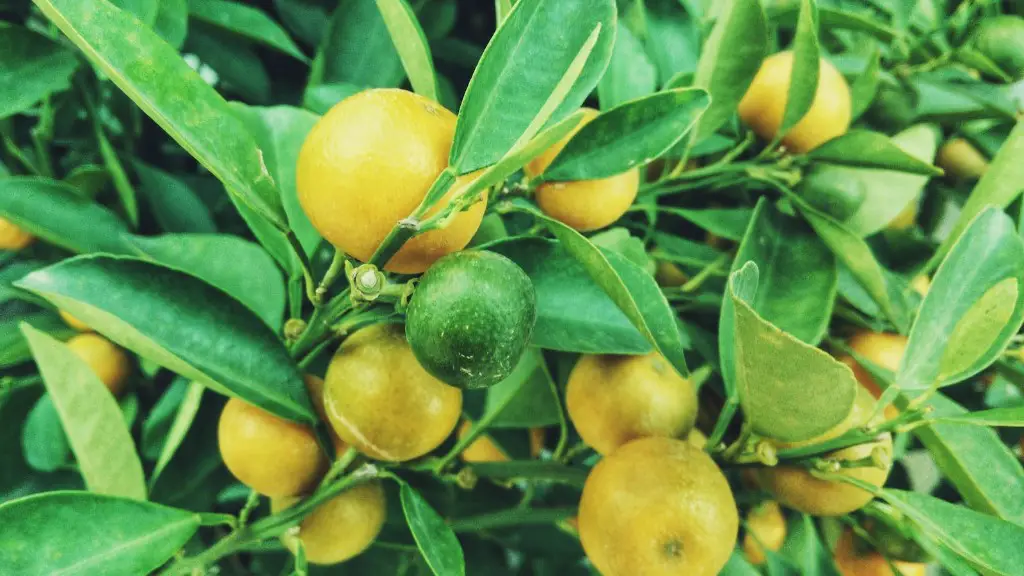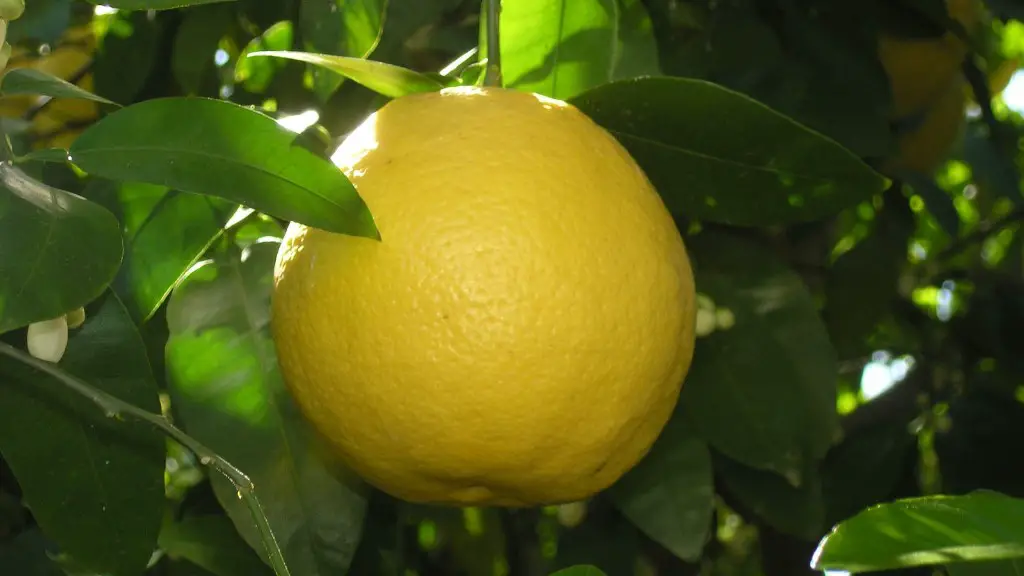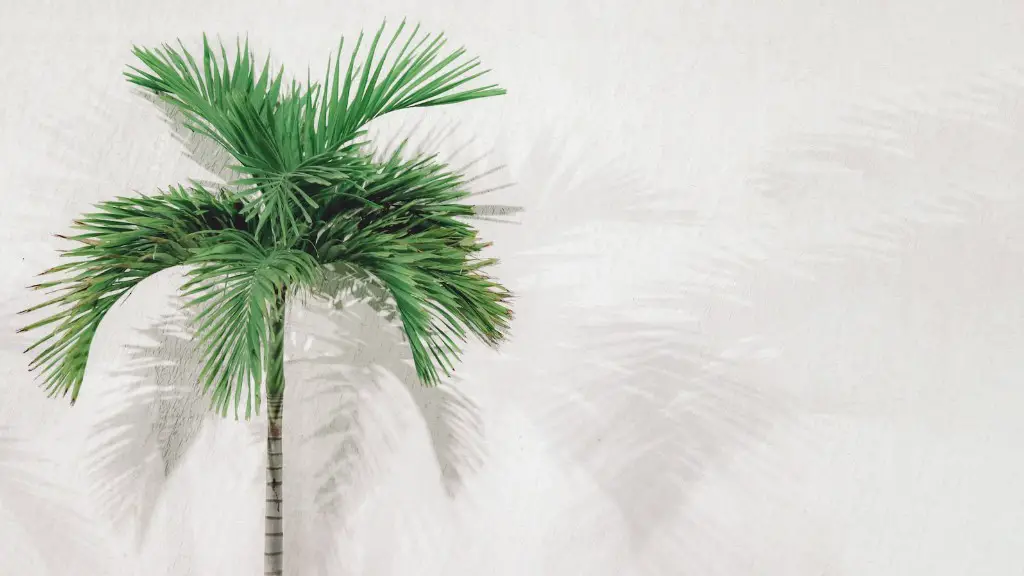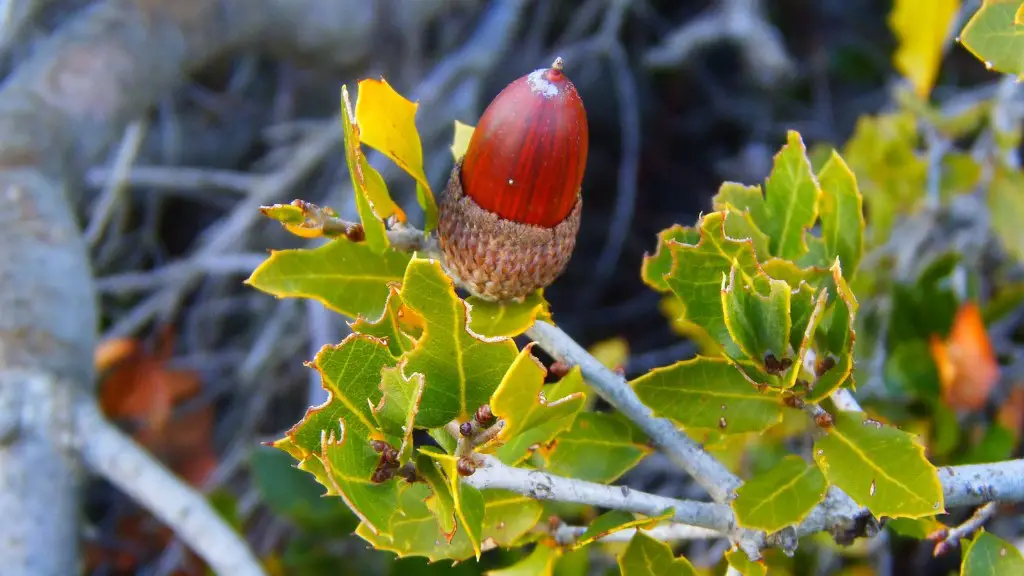If you’re looking to purchase a dwarf lemon tree, there are a variety of locations you can acquire one from. You could get one from a local nursery or garden center, a big box store such as Walmart or Home Depot, you could even get one online. Before you buy, however, there are a few things to consider.
When purchasing a dwarf lemon tree, it’s important to ensure that you’re getting one that’s healthy and suitable for your location. Dwarf lemon trees should be around two to three years old and be disease-free. The tree you purchase should also be hardy enough for the climate you live in so it can properly thrive.
When you buy the tree, look for any signs of disease such as yellowing leaves and weak limbs, among other issues. Your tree should have bright green leaves with no discolorations and should appear full and healthy. Additionally, you want to make sure that you’re purchasing a dwarf tree as some varieties can grow up to 8-feet tall or more which isn’t ideal for smaller spaces.
It’s also important to keep in mind that purchasing a dwarf lemon tree isn’t always the cheapest route to take. You’ll likely pay more for a good quality tree than for a regular non-dwarfing one. One of the advantages of a dwarf lemon tree, however, is that you’ll have a smaller tree but still be able to reap ample crop yields as dwarf trees generally bear more fruit.
Finally, once you have your tree it’s essential that you properly care for it. This includes ensuring it gets enough water, sunlight, nutrition, and is properly pruned. Dwarf lemon tree typically don’t need a lot of pruning, just occasional trimming of the inner branches and the tips of the branches. With proper care, you’ll enjoy your dwarf lemon tree for years to come.
Preparing The Area Before Purchase
Before you purchase a dwarf lemon tree, it’s highly recommended to prepare the area where you’re going to plant it. This means that you’ll need to dig the area in order to prepare it for planting. Allow a space that’s wide enough for the roots of the tree and fertile soil for the roots to grow. This will give the tree the best chance of surviving and thriving in the long run.
It’s also important to ensure that the soil you’re going to use is properly amended. Dwarf lemon trees prefer soil that’s high in organic matter such as topsoil or compost. Before you go to plant the tree, consider adding some additional organic matter to the soil to help its longevity.
Finally, it’s important to make sure that the area you’re planting in receives adequate sunlight – ideally it should receive full sun (a minimum of six to eight hours a day). Dwarf lemon trees like to reside in warm climates so keep that in mind if you live in a cold area.
Selecting The Right Tree
No matter where you’re buying your dwarf lemon tree, it’s important to make sure you select the right one. When selecting your tree, it’s important to inspect the tree for any signs of disease. Brown, yellow, or curled leaves are all signs of disease or stress, so you should steer clear from any trees exhibiting these signs.
It’s also important to ensure the tree you’re choosing is suited for the climate you live in. Dwarf lemon trees are hardy in USDA growing zones eight to 11 so make sure to keep that in mind when selecting one. If the area you planted your tree in doesn’t receive enough sunlight, your tree won’t be able to properly thrive.
Another thing to consider when selecting a tree is the type of stock you’re looking for. Dwarf lemon trees come in a variety of types, so it can be overwhelming when you’re choosing one. However, it helps to narrow down the selection by considering what type of lemon you want to grow. Certain types of dwarf lemon trees produce sweet lemons or those with a higher acidity, so it’s best to know what you’re looking for prior to purchase.
Planting and Caring for The Tree
Once you’ve chosen your tree and amended the soil, it’s time to plant the tree. Before you plant, make sure that the area is well-prepared so the tree can properly thrive. Dig a hole that’s deep and wide enough for the roots to fit in and make sure that it’s not exposed to any weeds or grass.
Once you’re digging, add in some of the amendments that you were previously using such as the topsoil, compost, and fertilizer. This will help the tree thrive and provide the best environment so it can grow and bear fruit. To finish off, heavily water the area and then place your dwarf lemon tree in the hole and cover it with soil.
When it comes to caring for your tree, it’s important to make sure it’s getting enough water, sunlight, and nutrition. Dwarf lemon trees prefer to be heavily watered when the soil begins to dry out and should be fertilized about once a month. Keep in mind that too much fertilizer isn’t beneficial for your tree, so make sure the measurements are moderate and follow the instructions on the package. Dwarf lemon trees also should be given ample sunlight on a daily basis, so if your tree is lagging in production, it may be in need of some more sun.
Reaping A Heavy Crop Yield
Even though a dwarf lemon tree is smaller compared to its full-sized counterpart, you can still reap an ample yield. Dwarf lemon trees are capable of flowering and bearing fruit throughout the year, depending on their location and climate. To maximize their productivity, make sure to get it an area where it will receive ample sunlight, enough water, and is properly fertilized.
When it comes to harvesting the fruit, there are a few things to keep in mind. Fruit should only be picked when it’s ripe and no longer immature. To identify a ripe lemon, press your thumb into the skin and look for a hint of yellow. You should never pick the fruit when it’s green as the quality won’t be as good.
Another important thing to consider is pruning. Pruning helps to maintain the size of your tree and its shape. Dwarf lemon trees don’t require as much pruning as regular-sized trees, however, it’s still important to prune any dead or excess growth. Additionally, pruning helps to keep the tree in shape and helps it to produce new growth and an ample flower and fruit crop.
Protecting From Frost
Dwarf lemon trees are usually suitable for warmer climates and unless you live in a warmer area, you may need to take some preventative measures if you want your tree to survive the winter. One of the ways to protect it from frost is by ensuring that it’s planted in an area that’s adequately insulated and not exposed to cold winds or temperatures.
If temperatures dip below freezing, it’s important to cover your tree with frost blankets or blankets to protect it. Burlap or old covers are some materials you could use to give it an extra layer of insulation. Additionally, be sure to keep an eye out for any signs of frostbite or freezing on the tree as this can be extremely detrimental.
Dwarf lemon trees are also susceptible to leaf deformation if it gets too cold, so it’s important to be familiar with how to care for your tree during the winter months. When temperatures start to drop, it’s best to water your tree less often as this can help to prevent any damage.
Keeping Critters Away
Another thing to consider when you’re growing a dwarf lemon tree is making sure that there are no critters that could pose a threat to the tree. One of the most common pests are birds and squirrels. To keep critters at bay, you can spray the tree with an organic deterrent or use bird nets to protect your tree.
To protect the tree from other pests, you should check it regularly to see if there are any signs of potential damage. Look for any holes in the bark or discolorations on the leaves as these could be indications that the tree is being affected by pests. Additionally, make sure that you buy insecticides specifically designed for lemon trees so it can adequately protect your tree and your crops.
Knowing how to treat pests is key to keeping your tree healthy and thriving. It’s also important to make sure that your tree is pruned correctly and not over pruned as this could damage the tree. Pruning correctly also helps to ensure that your tree grows healthily and can flourish when the time is right.





